Nestled within all of the innovation and development in Japan are treasure troves of natural wonders. Such is the case with the breathtaking Arashiyama Bamboo Grove in Kyoto. It’s a must-see destination for anyone visiting Kyoto to get away from the hustle and bustle of the city and enjoy the quiet and serenity that the forest offers.
Standing within the Arashiyama Bamboo Forest feels like being transported into another world. It’s a magical experience, as you are surrounded by tall bamboo that blocks out all other surroundings.
This world-famous, almost boundless forest of swaying bamboo is great for a soothing getaway to the outdoors during a visit to Kyoto and is located at the foot of the “Storm Mountains” north of the city of Kyoto.
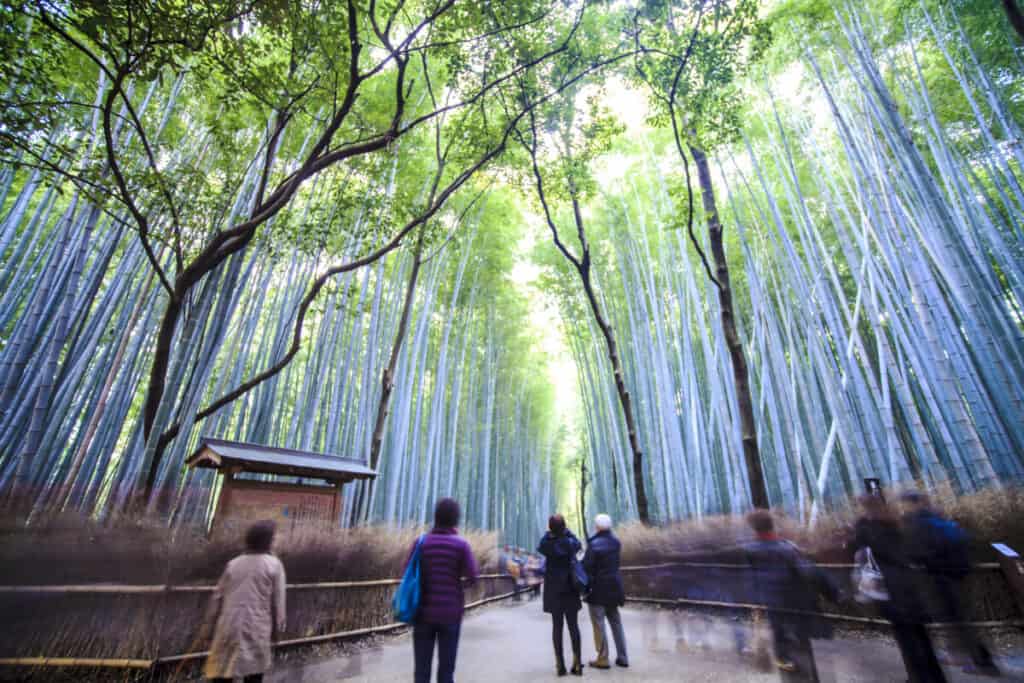
The Arashiyama bamboo forest is open 24 hours a day, 7 days a week, and entrance is free. The nearby Arashiyama area, which is famous for its innovative fishing practices utilizing trained cormorant birds, is indeed a great place to explore.
Arashiyama Bamboo Grove Location Via Google Maps
If you are fortunate enough to be able to explore the bamboo grove when it’s quiet and has fewer crowds, it will only add to the magical experience you will have walking through the grove.
Earlier in the day will provide more chances to see the grove with fewer tourists and visitors.
Kyoto’s Arashiyama District
There is a lot to see and do in the Arashiyama District, making it a popular tourist hub. However, if you can get past the crowds, you will enjoy the experience of staying in this part of Kyoto, even if just for a day or two.
There are hotels and ryokan in the area close to many of the attractions Arashiyama has to offer.
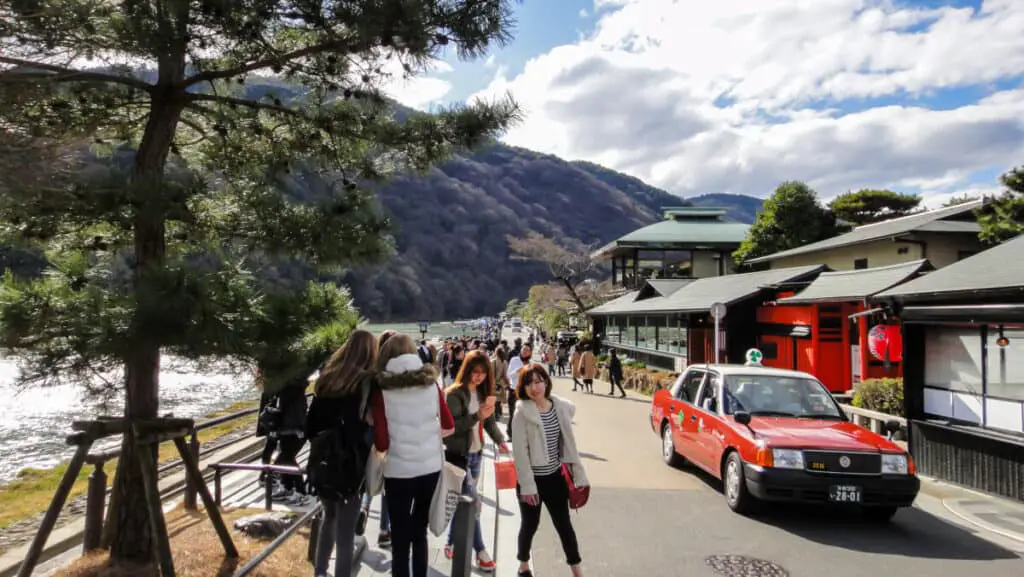
Visiting the bamboo forest is one of the most popular things to do, but there is also a multitude of temples to visit.
You can also take a boat ride through the Hozu-gawa, or visit the Katsura Rikyu Imperial Villa, which is famous in Japan for its innovation in garden design and architecture.
Arashiyama District Nearby Hotels Via Tripadvisor
Bamboo Alley
You are able to easily walk through the tall bamboo grove without disrupting their growth or having to weed through all the dense forest.
There’s a walkway within the grove that you can walk down while basking in the glory of the grove. This walkway is known as Bamboo Alley. It’s a popular site for photographs, as the beauty should be remembered.
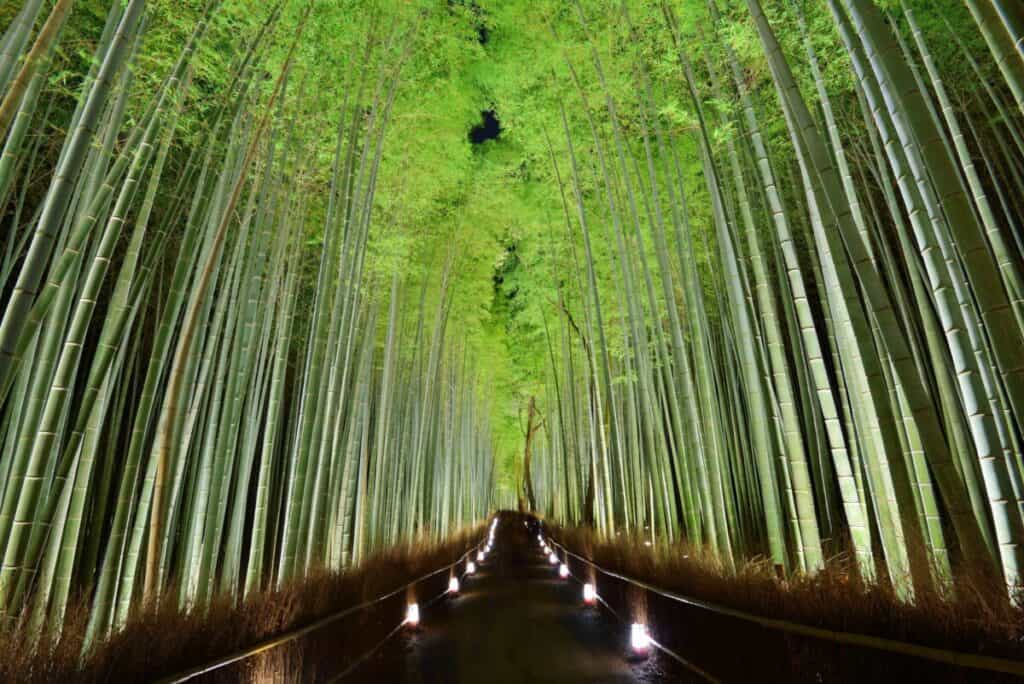
The Origins Of The Bamboo Forest
The entire grove is actually made up of two separate groves. They are connected through the Bamboo Alley, as well as Tenryu-ji Temple grounds.
It’s also connected by the JR Sagano-Saiin train tracks. The bamboo forest is also commonly referred to as the Sagano Bamboo Forest.
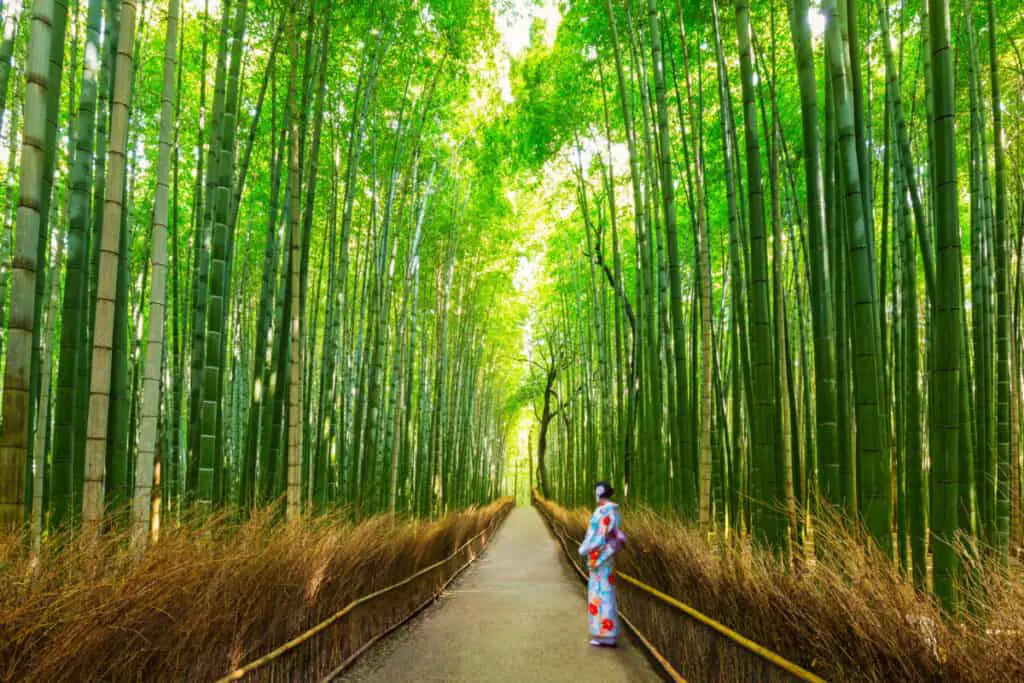
The grove was actually developed just to admire its sheer beauty once it was finished, but bamboo is a special plant for Japan.
Back in the Heian Period in Japan, bamboo was the top choice for royals such as imperial and nobles to decorate their gardens and their homes.
The Significance Of Bamboo
Bamboo is also a multipurpose plant, as cultivating it can be used for a variety of products. It’s not just something interesting to look at.
Bamboo can be used to make clothing and household products. In Japan, it’s commonly used to craft all sorts of items. It’s also a popular ingredient (bamboo shoots) in many Japanese dishes.
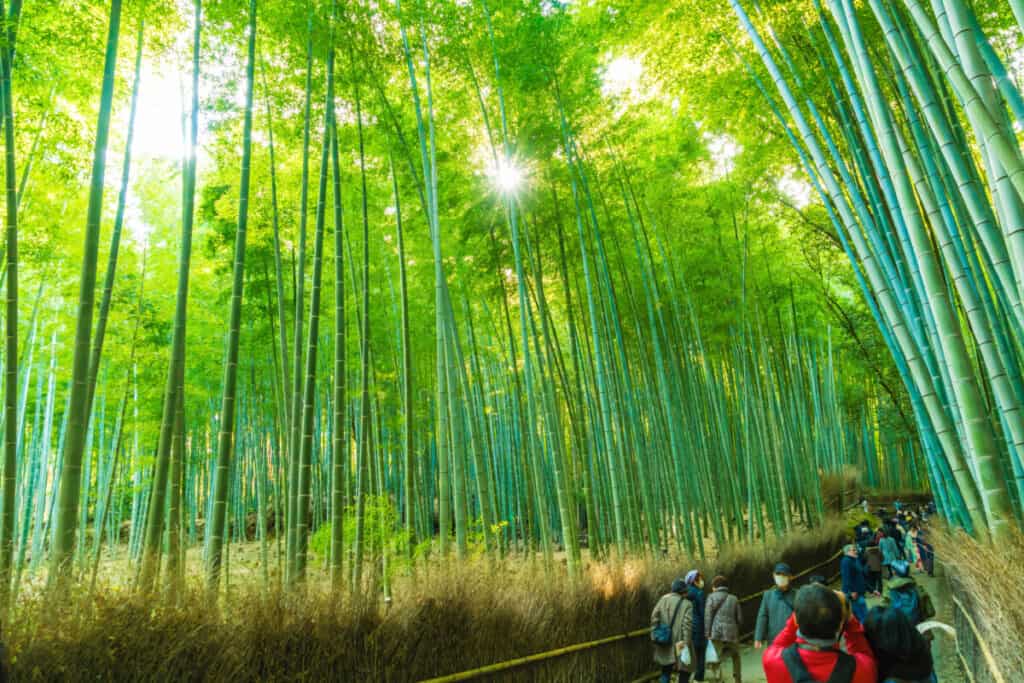
Bamboo is also believed to be able to ward off evil spirits and negativity, as it’s considered a symbol of strength in Japanese culture.
A small gathering of bamboo is often planted around sacred places in Japan, including Shinto shrines or Buddhist temples. Many of the myths and legends in Japanese culture have elements of bamboo integrated within them.
The Disappearance Of Bamboo Groves
Bamboo has been important to Japan for centuries. The relevance of bamboo can be traced back as far as the 8th century. At this time, the aristocrats of Japan enjoyed the serene elements of nature, including bamboo, and often traveled to these areas to explore the natural settings.
Unfortunately, with all of the development that has occurred over the years in Japan, many of the bamboo groves that existed were removed in order to make room for residences and buildings.
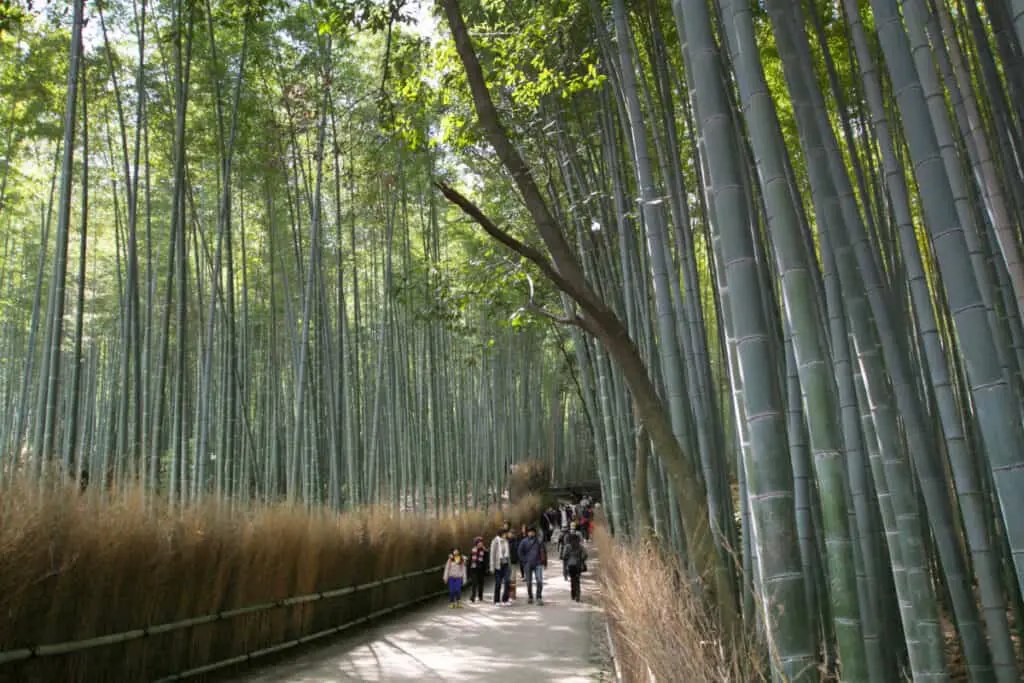
In order to be able to preserve what remained of the bamboo grove, it was declared that the government would protect it as of 1967.
Even more disheartening is the frequency of tourists disrespecting the bamboo groves by carving their initials into bamboo plants. This takes away from the privilege it should be to be able to wander through one of the last bamboo groves in Japan.
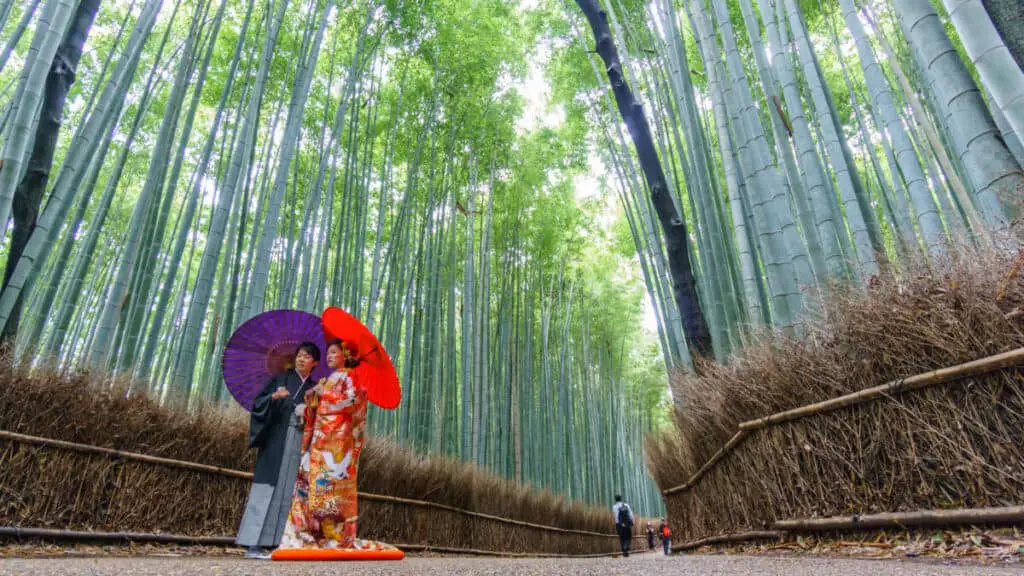
This particular bamboo grove in Arashiyama is also considered to be one of the top soundscapes of Japan. If you have the chance to visit during a quiet time, you’ll be instantly relaxed taking in the calm and blissful sound of the bamboo plants dancing in the wind.
Bamboo Forest Walking Tours
You are actually able to go on a walking tour so you can learn about the bamboo grove as you walk through the forest. It’s worth it to go on the tour, as the tour guides are able to navigate through some of the large crowds that can gather in the grove during peak times.
The walking tours can also take you through some of the other must-see destinations in Arashiyama, including the Katsura-gawa River and the Kameyama-koen Park.
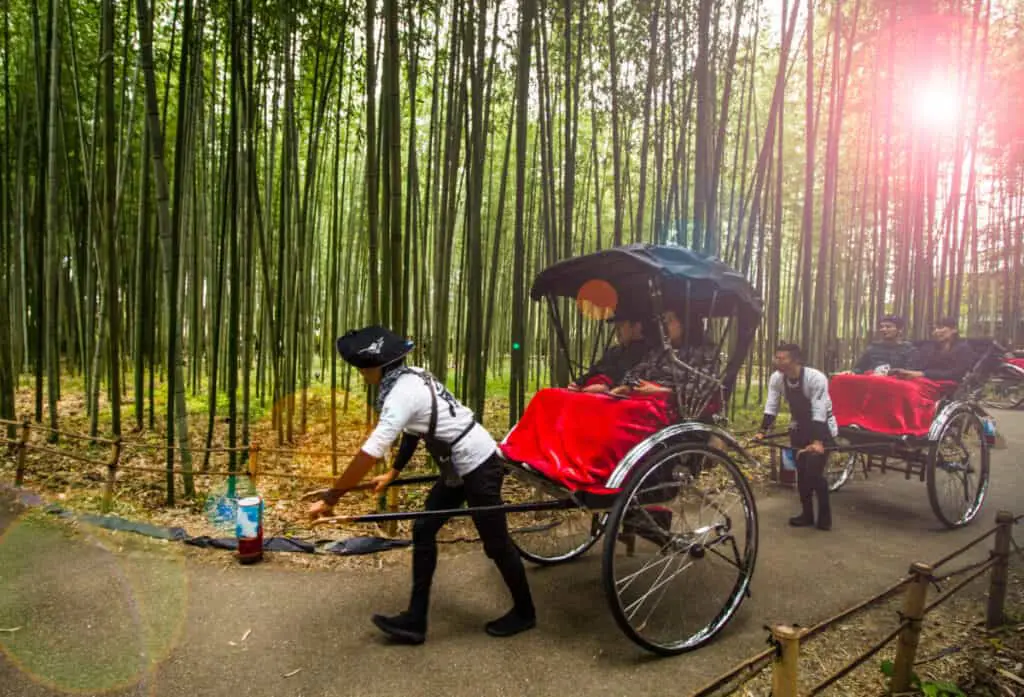
Guided Rickshaw Tours Via Tripadvisor
The tour can take a few hours, but taking it slow is the best chance to be able to enjoy the sights rather than just pass them by.
Guided Walking Tour Service Via Inside Kyoto
The Nonomiya-jinja Shrine
Nestled within the walls of the bamboo grove and Tenryu-ji Temple is a Shinto shrine called Nonomiya-jinja Shrine. The shrine is small in size but is big in significance for Japan.
The gate that brings you towards the Nonomiya-jinja Shrine is also a sight to behold. It’s a black gate that takes inspiration from an old Shinto type of gate. This style of gate is referred to as a Kuroki torii.
Nonomiya-jinja Shrine Official Website
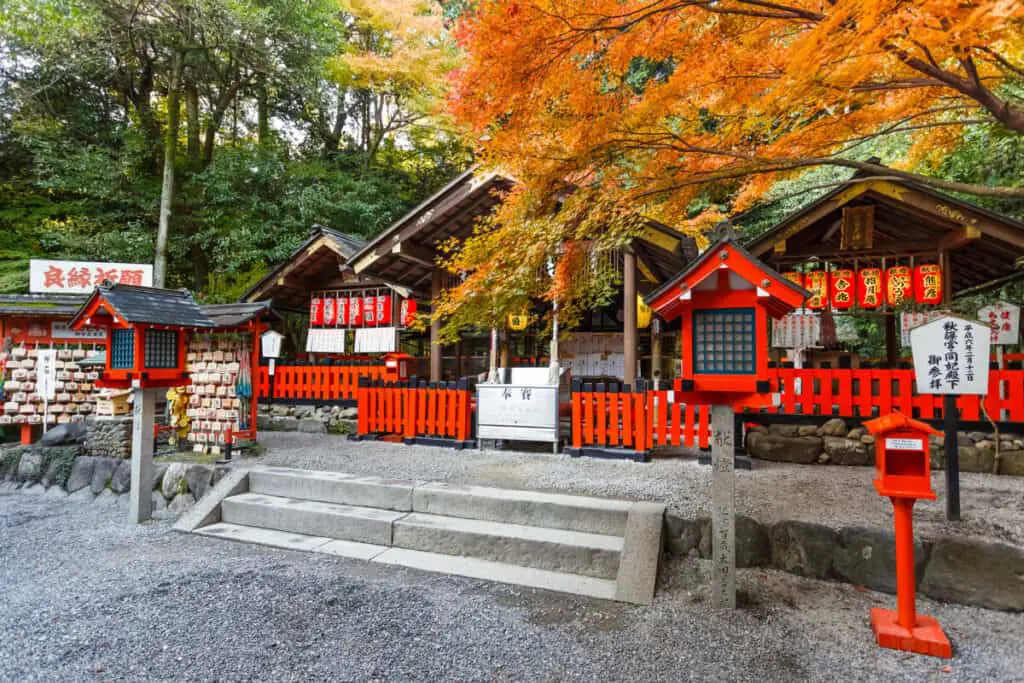
The shrine’s origin was to help offer a place for purification for imperial priestesses and princesses. The shrine consists of an altar and is surrounded by smaller shrines. There is also a small moss garden in the area for a natural element.
The small shrines have been erected to honor a variety of deities. One such deity is Benzaiten, the goddess of luck, and the deity Inari, who represents agricultural accomplishments and protection for crops.
The Tenryu-ji Temple
You are also able to see the Tenryu-ji Temple. This temple is revered as one of Kyoto’s finest and most pristine Buddhist temples. The temple has also been designated as a United Nations World Heritage Site.
Tenryu-ji Templ Official Website
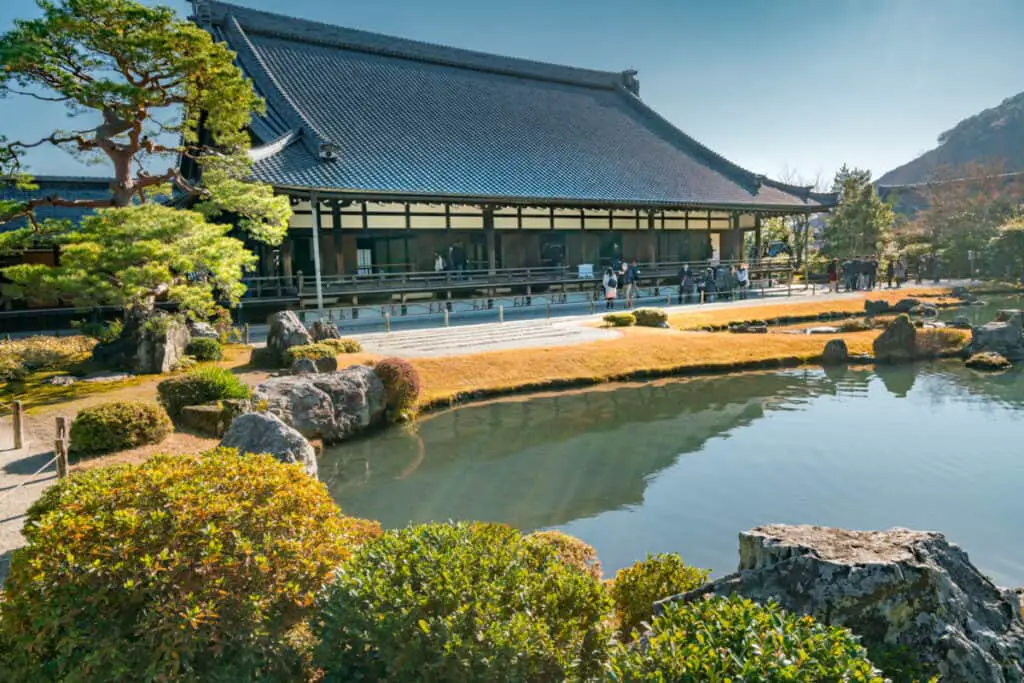
When you arrive at the temple, you can purchase a ticket to stroll through the garden surrounding the temple, take a walk into the main hall of the temple, or both.
The garden is definitely a must-see, as it’s one of the most popular gardens in Kyoto for its magnificence. There’s a pond in the garden as well which adds to its charm.
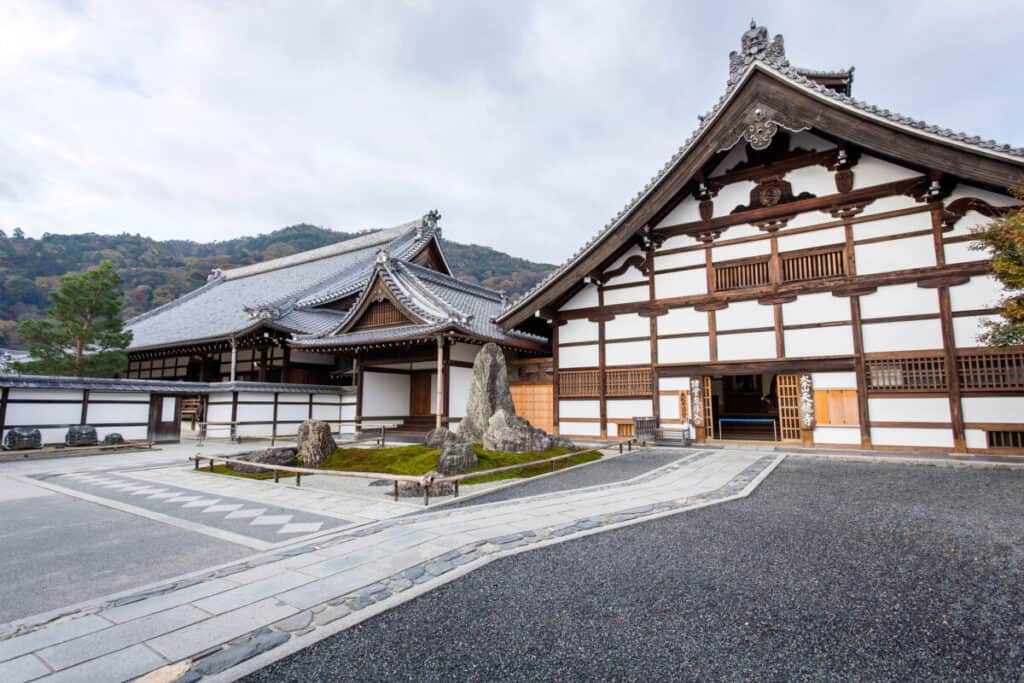
Entering the bamboo grove through the temple entrance is also the best way to get in and avoid the ocaisional crowds that congregate around the other entrances. The North Exit of the temple will bring you into the grove.
The Okochi-Sanso Villa
After you take your stroll through the bamboo grove, you will come to the entrance of the Okochi-Sanso Villa.
There is a breathtaking garden in this area, so it’s worth taking a stroll through here as well. With your ticket, you can enjoy a cup of matcha tea and traditional Japanese sweets (Wagashi) or other treats after strolling through the garden at the tearoom.
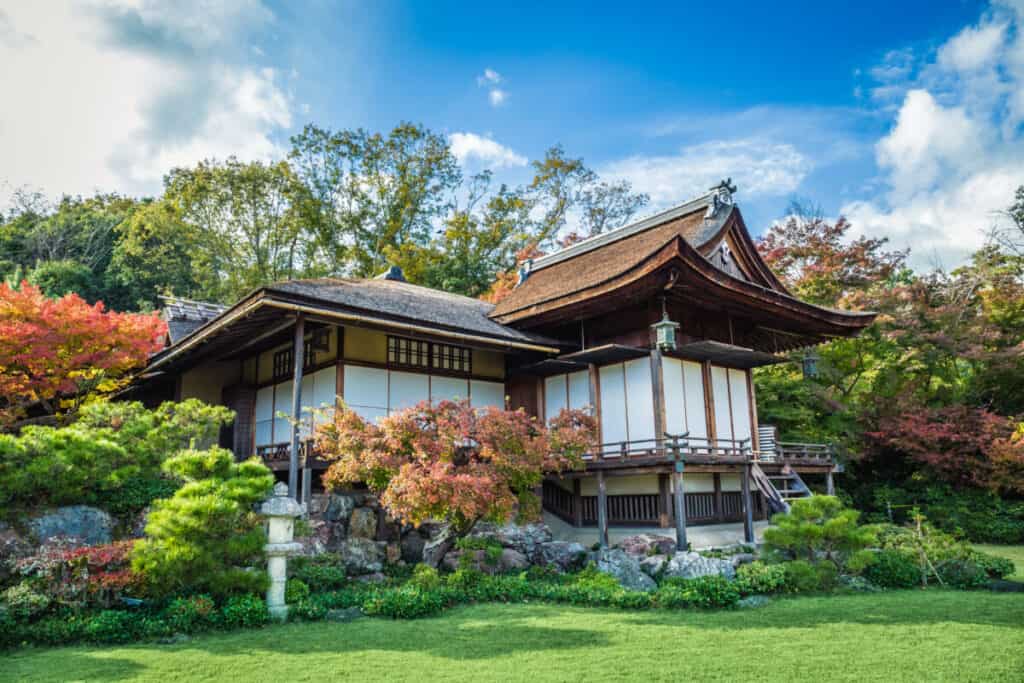
Okochi-Sanso Villa Location Via Google Maps
The villa was the former home of famous silent film actor Denjiro Okochi. Within the villa, apart from the tearoom, there is also a museum where you can learn more about the actor, as well as his personal home.
Kameyama-koen Park
After going through the villa, you also have the option to explore Kameyama-Koen Park. In this park, you’ll be able to enjoy some of Japan’s famous cherry blossom trees as well as lots of other natural landscapes.
Kameyama-koen Park Official Website (Google Translate Needed)
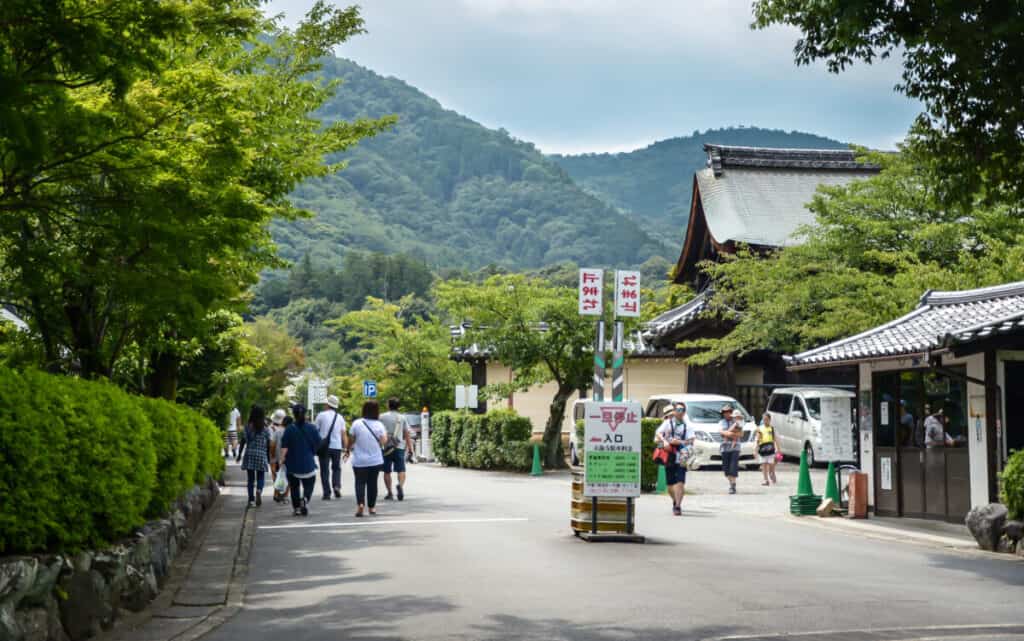
If you keep following the cobblestone route, you’ll also come upon the Hozu-gawa River and the Katsura-gawa River. Continue down the path and you’ll eventually make your way out to the main road of Arashiyama.
When To Visit The Bamboo Grove
The bamboo grove is open for visitors to enjoy all year round, and there is no cost to walk through it. There is a cost to visit some of the surrounding sights, such as the temples and parks.
The Bamboo Alley does not have much of a light source at night, so it can be a little bit difficult to enjoy the full effect of the grove after sunset.
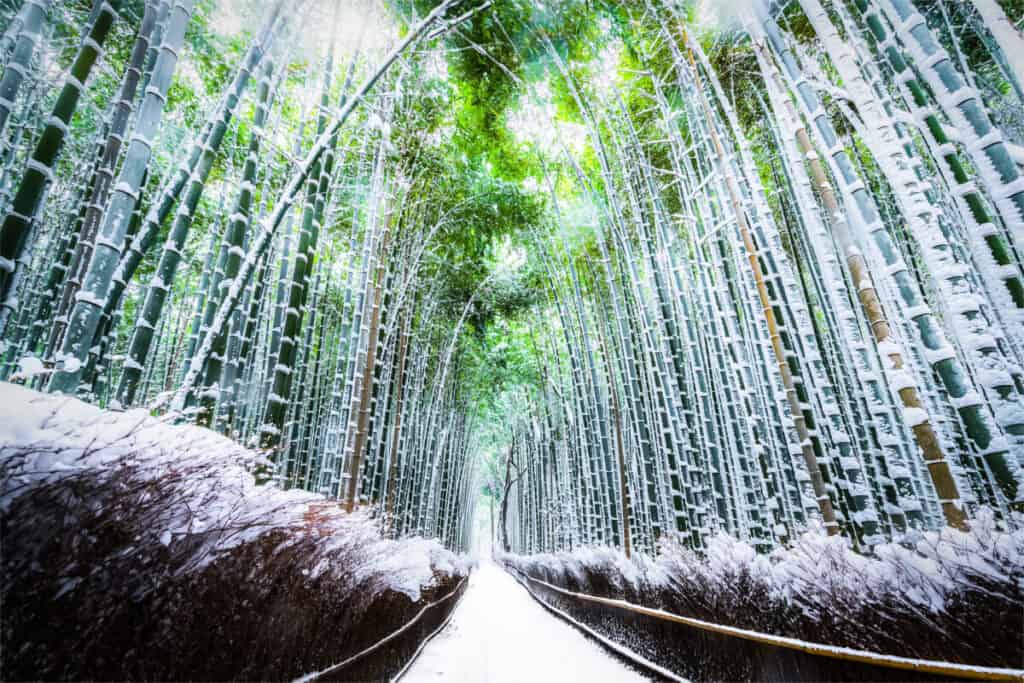
For the most optimal view of the bamboo grove, it’s recommended to try and visit in the summer, on a sunny day in the afternoon. However, the grove is truly magical in the winter when there is a light dusting of snow.










